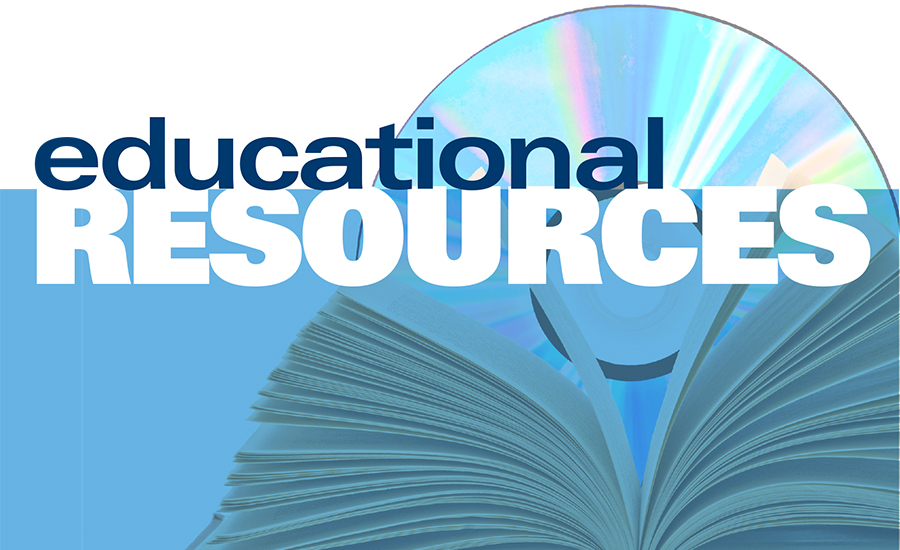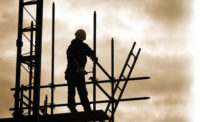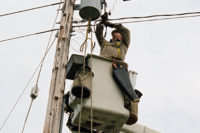How will new work-at-height standards impact equipment manufacturers?

Source: Association of Equipment Manufacturers (AEM)
ANSI (United States) and CSA (Canada) standards have, for almost four decades, provided best practices for safe, reliable access to work at height and have delivered a consistent benchmark for safe machine design in North America. Standards set a safety level for all participants in the market. Good standards also bring global markets closer together, driving commonality and stronger market competition, Scott Owyen, Genie Training Manager for Terex AWP, told attendees at AEM's 2017 Product Safety and Compliance Seminar.
Why are the standards changing?
ANSI and CSA both require periodic updates to all standards. The updating process includes a review of any ISO standards that apply to the products being addressed. Benefits from incorporating ISO concepts in the new ANSI and CSA standards include: North American aerial work platform manufacturers, including Genie, will be more closely aligned with global markets like Europe, Australia and China.
These changes will allow aerial work platform owners to more easily trade new and used equipment in many countries. due to increased world-wide commonality of these products.
What is changing?
1. Equipment Terminology
Aerial Work Platforms (AWPs) will now become known as Mobile Elevating Work Platforms, or MEWPs. The word “mobile” is important because it means that the equipment can be repositioned, either under its own power or by manual effort; it is not stationary.
In previous iterations of the standards, AWPs were classified by product types, such as booms, scissors and so on. In the new standards, MEWP classifications are made up of a combination of two key distinguishing descriptions:
- A MEWP Group
- An associated MEWP Type
A MEWP Group is determined by the platform location in reference to the equipment’s tipping line, which is either at the wheels or the outriggers.
A Group A machine has a design that does not allow the main platform to extend beyond the tipping line. In other words, the platform does not go outside of the drive chassis envelope. A perfect example of a Group A would be a scissor lift.
Conversely, a Group B machine has a design that allows the platformtoextend beyond the tipping line. A great example of a Group B machine would be an articulating or telescopic boom.
A MEWP Type is in reference to the equipment’s ability to travel:
- Type 1 – Traveling is allowed only with the MEWP in its stowed position
- Type 2 – Traveling with the work platform in the elevated position is controlled from a point on the chassis
- Type 3 – Traveling with the work platform in the elevated travel position is controlled from a point on the work platform
2. Equipment Design Standards
In addition to the terminology and language changes in the new ANSI A92 and CSA B354 standards, the standards also include several big changes to the equipment itself:
- Load Sensing — Many MEWPs, when in an elevated position, will be required to continuously check the weight in the platform and disable certain functions if the load is above the platform load limit. Other MEWPs will be able to apply enhanced overload criteria or enhanced overload and stability criteria to satisfy the requirement.
- Dynamic Terrain Sensing — Drive and certain boom functions must be disabled when out of their slope limit, and functions restricted to only those that safely return the machine to terrain that is within limits.
- Indoor-only Machines — Allows for the development of smaller, lighter-weight MEWPs bearing an “indoor only” rating because these MEWPs cannot be used in conditions where they might be subjected to any wind.
In addition to the changes highlighted above, there will be many other alterations including:
- Toe guards on work platform entrances
- Prohibited use of chain gates and flexible gates
- Reduced lift and lower speeds on some models.
3. Safe Use and Planning
The user must develop a Safe Use Program specific to MEWPS which must include but not be limited to:
- Performing a site risk assessment;
- Selection, provision and use of a suitable MEWP and associated equipment;
- An assessment that the support surface is adequate to support the weight of the MEWP;
- MEWP maintenance including inspections and repairs as required;
- Inform the operator of local site requirements and warn and provide the means to protect against identified hazards;
- Have a trained and qualified supervisorto monitor the performance or the work of the operator;
- Prevention of unauthorized use of the MEWP;
- Safety of persons not involved in the operation of the MEWP.
4.Risk Assessment and Rescue Planning
The risks associated with the task specific to MEWP operations shall be identified. These might be associated with the location where the work is to be carried out, the nature of the MEWP, or the personnel, materials and equipment to be carried.
- Identify control measures;
- Identify safe work procedures;
- Rescue from height;
- Communicate the results.
The user must develop a written rescue plan that will be carried out in the case of machine breakdown, platform entanglement or fall from platform. The plan shall be put in writing and become part of the company's training manual.
All occupants must receive training that explains procedures to follow if they fall and await rescue or witness another worker's fall. This plan must limit the time that a properly restrained worker hangs suspended in the air. Rescue plans can include the following:
- Self-rescue – by the person involved
- Assisted rescue – by others in the work area
- Technical rescue – by emergency services
5. Training (Operators, Supervisors & Occupants)
To prepare for these standards changes, it is important for users (most commonly the employer) to understand several significant changes
Supervisor Training (ANSI only)
The user must ensure that all personnel that directly supervise MEWP operators are trained in the following areas:
- Proper selection of the correct MEWP for the work to be performed;
- The rules, regulations and standards that apply to MEWPs, including the provisions for safe use as defined in ANSI A92.22 Training and Familiarization, and the work being performed;
- Potential hazards associated with use of MEWPs and the means to protect against identified hazards;
Knowledge that the manufacturer's operating manual(s) are an integral part of the equipment and need to be stored properly in the weather resistant compartment on the MEWP.
Occupant Training
The MEWP operator must ensure that all occupants in the platform have a basic level of knowledge to work safely on the MEWP:
- The requirement to use fall protection and the location of fall protection anchors;
- Factors including how their actions could affect stability;
- Safe use of MEWP accessories they are assigned to use;
- Site specific work procedures the occupants must follow related to the operation of the MEWP;
- Hazards related to the task at hand and their avoidance;
- Manufacturer’s warnings and instructions;
- At least one of the occupants must be provided with the knowledge to operate the controls in an emergency where the operator cannot.
6. Maintenance and Repair Personnel Training
Users must ensure that maintenance and repair personnel are trained by a qualified person to inspect and maintain the MEWP in accordance with the manufacturer's recommendations, as well as ANSI and CSA standards.
In the case where a MEWP is being rented, arrangements must be made by the owner to identify the entity that will be responsible for the inspections and maintenance activities described in the standard:
- Frequent Inspections – When the MEWP is put into service or has been out of service for three months
- Annual Inspections – Performed no later than 13 months after the previous Annual Inspection.
Final Comments
This article only scratches the surface of the changes that the industry will be facing. We encourage you to purchase a copy of the standards for you to achieve a full understanding of the requirements. Do not underestimate the impact the introduction of the new ANSI and CSA standards will have. Start preparing now for a smoother transition.
Editor’s Note: The new ANSI A92 Mobile Elevating Work Platform (MEWP) suite of standards covering design, safe-use and training are set for publication in late summer 2017. The CSA standards have now been published. The compliance dates for the ANSI standards is expected to be 12-months from publication. For the CSA standards, no compliance date is noted in the standard, only recommendations and these will be variable based on Canadian providences adopting the standards. This will potentially result in some North American product misalignment.
More Information
The 2018 Product Safety & Compliance Seminar and Product Liability Seminar will be held at the Chicago Marriott Lincolnshire Resort in Lincolnshire, IL from April 23-26, 2018. For more information on the Product Safety & Compliance and Product Liability seminars, contact Nathan Burton, AEM technical and safety services manager (nburton@aem.org, tel: 414-298-4126).
Looking for a reprint of this article?
From high-res PDFs to custom plaques, order your copy today!







